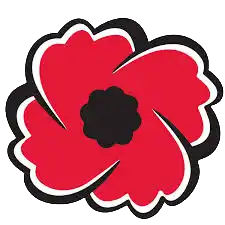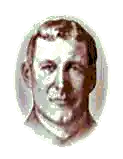
The Poppy
The Poppy Campaign
History
Each November, Poppies blossom on the lapels and collars of over half of Canada’s entire population. Since 1921, the Poppy has stood as a symbol of Remembrance, our visual pledge to never forget all those Canadians who have fallen in war and military operations. The Poppy also stands internationally as a “symbol of collective reminiscence”, as other countries have also adopted its image to honour those who have paid the ultimate sacrifice.
This significance of the Poppy can be traced to international origins.
The association of the Poppy to those who had been killed in war has existed since the Napoleonic Wars in the 19th century, over 110 years before being adopted in Canada. There exists a record from that time of how thickly Poppies grew over the graves of soldiers in the area of Flanders, France. This early connection between the Poppy and battlefield deaths described how fields that were barren before the battles exploded with the blood-red flowers after the fighting ended.
Just prior to the First World War, few Poppies grew in Flanders. During the tremendous bombardments of that war, the chalk soils became rich in lime from rubble, allowing “popaver rhoes” to thrive. When the war ended, the lime was quickly absorbed and the Poppy began to disappear again.
The person who was responsible more than any other for the adoption of the Poppy as a symbol of Remembrance in Canada and the Commonwealth was Lieutenant-Colonel John McCrae, a Canadian Medical Officer during the First World War.
Lieutenant-Colonel John McCrae
 Lt. Col. John McCraeLieutenant-Colonel McCrae was born on 30 November 1872 in Guelph, Ontario. At age 14, he joined the Highfield Cadet Corps and, three years later, enlisted in the Militia field battery. While attending the University of Toronto Medical School, he was a member of the Queen’s Own Rifles of Canada.
Lt. Col. John McCraeLieutenant-Colonel McCrae was born on 30 November 1872 in Guelph, Ontario. At age 14, he joined the Highfield Cadet Corps and, three years later, enlisted in the Militia field battery. While attending the University of Toronto Medical School, he was a member of the Queen’s Own Rifles of Canada.
With Britain declaring war on Germany on 4 August 1914, Canada’s involvement was automatic. John McCrae was among the first wave of Canadians who enlisted to serve and he was appointed as brigade surgeon to the First Brigade of the Canadian Forces Artillery.
In April 1915, John McCrae was stationed near Ypres, Belgium, the area traditionally called Flanders. It was there, during the Second Battle of Ypres, that some of the fiercest fighting of the First World War occurred. Working from a dressing station on the banks of the Yser Canal, dressing hundreds of wounded soldiers from wave after wave of relentless enemy attack, he observed how “we are weary in body and wearier in mind. The general impression in my mind is of a nightmare.”
In May, 1915, on the day following the death of fellow soldier Lt Alexis Helmer of Ottawa, John McCrae wrote his now famous work, an expression of his anguish over the loss of his friend and a reflection of his surroundings – wild Poppies growing amid simple wooden crosses marking makeshift graves. These 15 lines, written in 20 minutes, captured an exact description of the sights and sounds of the area around him.
Lieutenant-Colonel John McCrae left Ypres with these memorable few lines scrawled on a scrap of paper. His words were a poem which started, “In Flanders fields the poppies blow…” Little did he know then that these 15 lines would become enshrined in the innermost thoughts and hearts of all soldiers who hear them. Through his words, the scarlet Poppy quickly became the symbol for soldiers who died in battle.
The poem was first published on 8 December 1915 in England, appearing in “Punch” magazine.
IN FLANDERS FIELDS
In Flanders fields the poppies blow
Between the crosses, row on row,
That mark our place; and in the sky
The larks, still bravely singing, fly
Scarce heard amid the guns below.
We are the Dead. Short days ago
We lived, felt dawn, saw sunset glow,
Loved and were loved, and now we lie
In Flanders fields.
Take up our quarrel with the foe:
To you from failing hands we throw
The torch; be yours to hold it high.
If ye break faith with us who die
We shall not sleep, though poppies grow
In Flanders fields.
John McCrae
His poem speaks of Flanders fields, but the subject is universal – the fear of the dead that they will be forgotten, that their death will have been in vain. Remembrance, as symbolized by the Poppy, is our eternal answer which belies that fear.
Sadly, Lieutenant-Colonel John McCrae died of pneumonia at Wimereux, France on 28 January 1918. He was 45 years old.
The Flower of Remembrance
An American teacher, Moina Michael, while working at the YMCA Overseas War Secretaries’ headquarters in New York City in November 1918, read John McCrae’s poem “In Flanders Fields”. She immediately made “a personal pledge to keep the faith and vowed always to wear a red poppy of Flanders Fields as a sign of remembrance and as an emblem for keeping the faith with all who died.
Two years later, during a 1920 visit to the United States, a French woman, Madame Guerin, learned of the custom. On her return to France, she decided to use handmade Poppies to raise money for the destitute children in war-torn areas of the country. Following the example of Madame Guerin, the Great War Veterans’ Association in Canada (the predecessor of The Royal Canadian Legion) officially adopted the Poppy as its Flower of Remembrance on 5 July 1921.
Thanks to the millions of Canadians who wear the Legion’s lapel Poppy each November, the little red plant has never died. And neither have Canadian’s memories for 117,000 of their countrymen who died in battle.
A Symbol of Unity
At 0530 hours on the morning of 9 April 1917, the Battle of Vimy Ridge began, marking an important milestone in our military history. For the next few days, Canadian troops fought relentlessly, braving enemy forces, a heavily-fortified ridge and the weather. This battle was significant; not only was it a resounding success for Canada but, in the words of Brigadier-General A.E. Ross, it marked the “birth of a nation”. No longer would Canada be overshadowed by the military strength of her allies. This battle had proven Canada’s ability as a formidable force in the theatre of war. The bravery, discipline and sacrifice that Canadian troops displayed during those few days are now legendary. The battle represented a memorable unification of our personnel resources as troops from all Canadian military divisions, from all parts of Canada and from all walks of life, joined to collectively overcome the powerful enemy at considerable odds. Our troops united to defeat adversity and a military threat to the world.
The bravery, discipline and sacrifice that Canadian troops displayed during those few days are now legendary. The battle represented a memorable unification of our personnel resources as troops from all Canadian military divisions, from all parts of Canada and from all walks of life, joined to collectively overcome the powerful enemy at considerable odds. Our troops united to defeat adversity and a military threat to the world.
Now, decades later, Canadians stand united in their Remembrance as they recognize and honour the selfless acts of our troops from all wars. We realize that it is because of our war veterans that we exist as a proud and free nation.
Today, when people from all parts of Canada and from all walks of life join together in their pledge to never forget, they choose to display this collective reminiscence by wearing a Poppy. They stand united as Canadians sharing a common history of sacrifice and commitment.
The Lapel Poppy
 The lapel Poppies that are worn in Canada today were first made, beginning in 1922, by disabled veterans under the sponsorship of the Department of Soldiers Civil Re-establishment. Until 1996, Poppy material was made at the “Vetcraft” sheltered workshops run by Veterans Affairs Canada in Montreal and Toronto. The work provided a small source of income for disabled ex-service persons and their dependants, allowing them to take an active part in maintaining the tradition of Remembrance.
The lapel Poppies that are worn in Canada today were first made, beginning in 1922, by disabled veterans under the sponsorship of the Department of Soldiers Civil Re-establishment. Until 1996, Poppy material was made at the “Vetcraft” sheltered workshops run by Veterans Affairs Canada in Montreal and Toronto. The work provided a small source of income for disabled ex-service persons and their dependants, allowing them to take an active part in maintaining the tradition of Remembrance.
When it no longer became practical for Veterans Affairs Canada to maintain the “Vetcraft” operations, the Legion volunteered to take on the continuing responsibility for the production of Poppies. In so doing, Dominion Command has awarded a production contract to a private company to produce the Poppies but all operations are conducted under strict Legion control and oversight.

